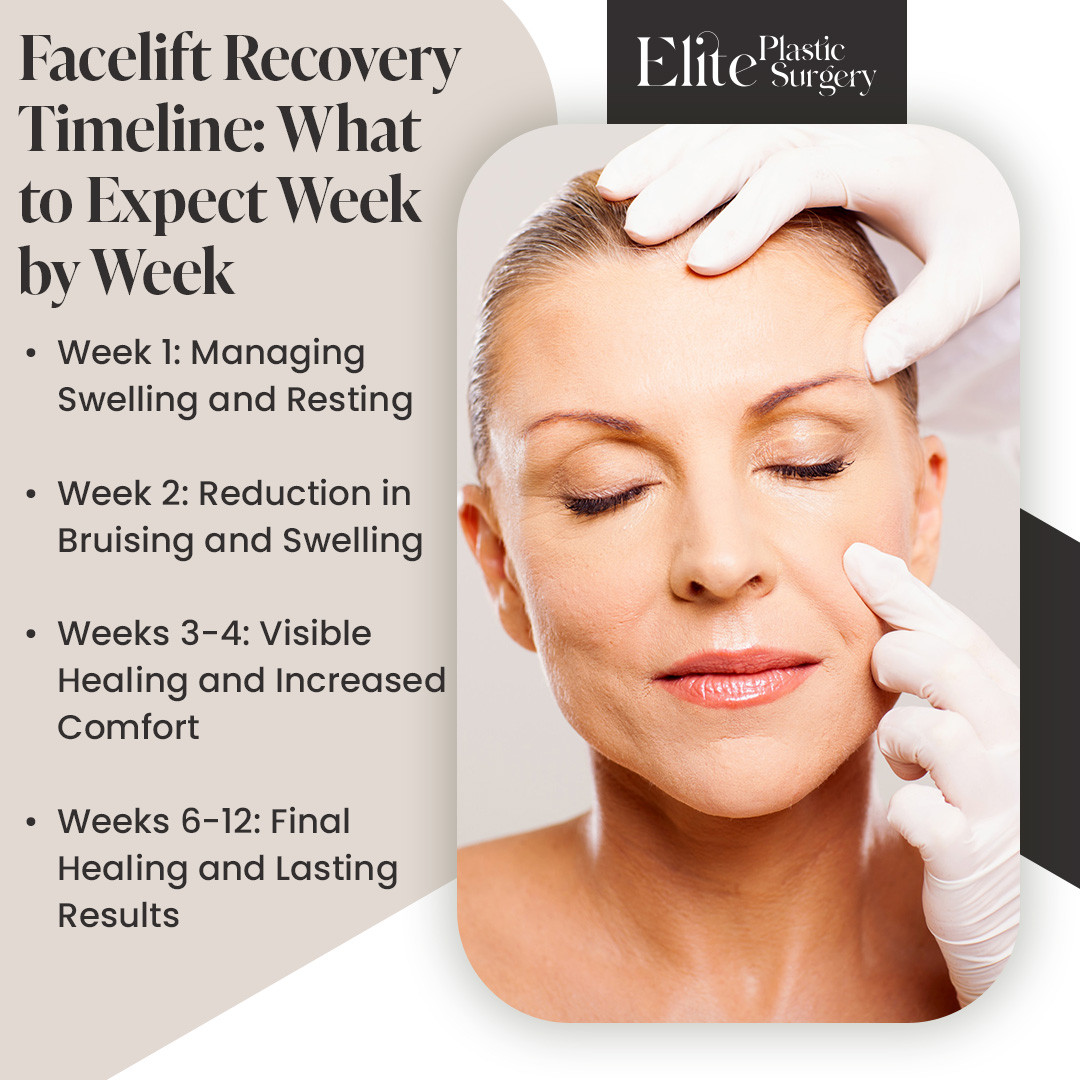Elite Plastic Surgery’s Facelift Healing Guide: Recovery Stages and Tips for a Smooth Outcome
Phoenix, United States - May 23, 2025 / Elite Plastic Surgery (Phoenix) /
Phoenix, AZ – A facelift is a transformative procedure that restores a youthful appearance by tightening sagging skin and smoothing deep wrinkles. However, a successful outcome depends on proper post-surgical care and a well-managed recovery process. At Elite Plastic Surgery in Phoenix, patients undergoing facelift surgery receive expert care and personalized aftercare plans to support their healing and long-term results.
Understanding what happens after surgery, the recovery timeline, and the signs of normal versus concerning healing can help patients feel more confident throughout the process.
What Happens After a Facelift Surgery?
The initial recovery phase involves swelling, bruising, and tightness. These symptoms are temporary and improve gradually over the following weeks. Swelling may be controlled by applying cold packs and bandages as instructed. Following post-operative instructions after a facelift, mini facelift, or face and neck lift at Elite Plastic Surgery is critical for a smooth recovery. This includes keeping the head elevated while resting, avoiding excessive facial movements, and taking prescribed medications as directed. Pain is generally mild to moderate in nature and can be controlled with prescribed pain medications. Discomfort is most noticeable in the first 48-72 hours post-surgery, after which it gradually diminishes as healing progresses.
Facelift Recovery Timeline: What to Expect Week by Week
Week 1: Managing Swelling and Resting
Swelling and bruising peak in the first few days after surgery. Patients should rest as much as possible and avoid any activity that increases blood pressure. Sleeping with the head elevated and applying cold compresses and bandages can help reduce swelling.
Follow-up visits are scheduled by the Elite Plastic Surgery team to monitor healing after a facelift or mini facelift in Phoenix. During this appointment, the surgeon may adjust bandages and check incisions for proper healing.
Week 2: Reduction in Bruising and Swelling
By the second week, noticeable improvements begin. The swelling starts to subside, and patients may feel more comfortable moving around. It is normal to experience some numbness and reduced sensation for several weeks after surgery. Mild to moderate discomfort and occasional minor bleeding may also occur. Stitches are typically removed between the fifth and tenth day.
To support proper healing, patients should avoid bending, stooping, smoking, alcohol, and aspirin, as these can increase the risk of complications by affecting blood circulation. Many patients feel ready to return to light daily activities, keeping in mind the above post-surgical conditions. Social interactions may still be limited due to residual bruising.
Weeks 3-4: Visible Healing and Increased Comfort
By this stage, most swelling and bruising have significantly improved. The face continues adjusting to its new contours, and the results become more defined.
Patients can resume most non-strenuous activities but should still avoid intense exercise. Light walking is encouraged to promote circulation and healing.
Weeks 6-12: Final Healing and Lasting Results
The majority of swelling and tightness resolve by this stage. Elite Plastic Surgery finds that most patients are able to see the final results of their facelift surgery in four to six weeks. The skin adjusts to its new position, revealing a smoother, more youthful look. If you opt for a mini facelift by their team, the final results are usually seen in five to six weeks. Most patients return to their full routines, including exercise and social events. The final results become more apparent as subtle swelling fades completely.
When Can You Resume Normal Activities After a Facelift?
Light activities can usually be resumed after two weeks, but strenuous exercise should be avoided for at least four to six weeks. Healing varies for each individual. Whether they undergo a mini facelift or a face and neck lift in Phoenix at Elite Plastic Surgery, patients should follow their surgeon’s recommendations.
Sun protection is essential after a facelift. Direct sun exposure can cause hyperpigmentation and slow the healing process. Patients should use sunscreen and wear protective hats when outdoors.
Signs of Normal vs. Concerning Facelift Recovery
Normal Recovery Signs:
Mild swelling, bruising, and tightness
Temporary numbness in treated areas
Gradual improvement in facial contours
Signs That Require Medical Attention:
Severe or worsening pain
Excessive redness, warmth, or swelling around incisions
Persistent fever or unusual drainage from incision sites
Patients should attend all scheduled follow-ups after a facelift or mini facelift in Phoenix at Elite Plastic Surgery to ensure proper healing and address any concerns.
Elite Plastic Surgery in Phoenix, AZ: Your Partner in Facelift Recovery
At Elite Plastic Surgery, expert surgeons specialize in facelifts, mini facelifts, and face and neck lifts in Phoenix to help patients achieve natural, long-lasting results.
Each patient receives a customized recovery plan for optimal healing. The team at Elite Plastic Surgery provides post-operative guidance to support comfort, minimize swelling, and prevent complications.
Advanced techniques and expertise lead to smoother, more youthful outcomes. Whether considering a mini facelift in Phoenix for subtle rejuvenation or a full face and neck lift in Phoenix for more dramatic results, patients can trust Elite Plastic Surgery for top-tier care.
For expert guidance on the process of a facelift in Phoenix at Elite Plastic Surgery and recovery post-surgery, contact them at (480) 291-6895 or contact@epsaz.com.

Contact Information:
Elite Plastic Surgery (Phoenix)
10910 N. Tatum Blvd Suite B-100
Phoenix, AZ 85028
United States
PR Dept
(480) 291-6895
https://eliteplasticsurgeryaz.com/
Original Source: https://www.eliteplasticsurgeryaz.com/blog/recovering-after-a-facelift-surgery/



